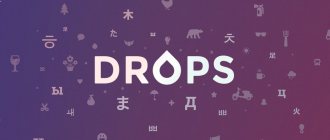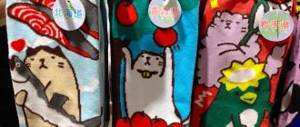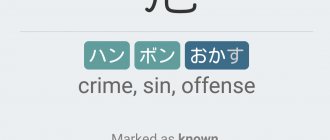The Japanese language is unique. Just like Japan itself and its people. We admire the sacred symbol of Japan - Mount Fuji or Fujisan. We love Japanese cuisine - ramen, sushi, yakitori and many other dishes. Every person touches Japanese culture and begins to become interested in it. Some people get so carried away that they have a great desire to learn Japanese. The Japanese language is melodic, rhythmic and beautiful. It's worth listening to a few songs in Japanese and getting a feel for how good the songs sound in Japanese. The Japanese language is unique and multifaceted. This article will talk about the best guides to help you learn Japanese. Don't forget to bookmark the article so you can return to it periodically. We also recommend reading where to start learning Japanese.
Minna no nihongo
This is a fundamental textbook that should be on every Japanese student's shelf. This is the most understandable and accessible textbook. To successfully study the Minna no Nihongo textbook, you need to know katakana and hiragana.
Benefits of using the tutorial:
- The material in Minna no nihongo is presented in an accessible and interesting manner;
- A large number of illustrations;
- Only modern vocabulary is used (there are no tepu reko:da);
- After studying the material, you will be able to use the knowledge when communicating with the Japanese.
Genki
When meeting other people, the Japanese ask: “How are you?”: “O-genki desu ka?”, literally: “How are you?” The word Genki translates to “healthy, full of life, happy, vigorous.” And this word is used in the title of Genki tutorials. The textbook material was carefully created based on the needs of students. This project took more than four years to complete. This is the textbook that will allow students to easily learn Japanese. The textbook is equipped with useful and colorful illustrations.
Dekiru Nihongo
The peculiarity of this Japanese textbook is that the student can immediately apply the acquired knowledge in real life, in communicating with foreigners. The textbook for beginners to learn Japanese consists of 15 lessons. Each lesson has the following sections: speaking, listening, studying a specific topic, consolidating material and memorizing vocabulary. The tutorial will cover topics such as shopping, daily routine, my favorite pastimes, culture and customs, and much more.
Try
Try is an excellent language learning guide with easy-to-understand grammar explanations. Each section presents a dialogue with the grammatical structure being studied. This is followed by an explanation of grammar and exercises to consolidate the material. This textbook is used in the best language schools in Japan.
Advantages of the textbook:
- Simple explanation of grammatical structures;
- Availability of keys to tasks;
- Simultaneous training of two languages: English and Japanese;
- The format of the audio assignments corresponds to the Noryoku Shiken exam;
- Having all five levels (N5, N4, N3, N2, N1) to prepare for Noryoku Shiken.
Japanese “Live”: Speaking Skills Learned through Listening
A Japanese textbook aimed at developing speaking skills. The peculiarity of this textbook is that all tasks are audio. You listen to people's conversations and choose the correct answer. It is also convenient that the tasks are given in parallel with the English language. If you are an auditory learner (that is, you perceive information well by ear and have a good auditory memory), then you simply must purchase this textbook.
A huge advantage in mastering Japanese is knowing English. You will need English to learn Japanese using books written in English. Most textbooks for learning Japanese use English.
Busuu
The Busuu application provides interactive online lessons for learning, including the Japanese language.
Program features:
- Developed in a simple form, with phrases voiced with clearly defined diction, and pictures.
- Contains interactive exercises and tasks of varying difficulty for users.
- The ability to interact with other users, including native speakers, is included.
- The emphasis of the program is on learning spoken phrases.
| Android | iOS |
Japanese for today
The year of publication of the book is 1990. The book may seem a little old. It contains basic information about grammar. You will read texts on various topics. All texts are provided with parallel translation. Japanese for Today contains 30 lessons. First comes the text written in the Japanese Hiragana syllabary and Japanese Kanji characters. The Japanese text is followed by the Romaji text and then the English translation of the text. After reading the texts, basic information about grammar, useful phrases and expressions are given. At the end there are exercises to consolidate all the lesson material. Despite the fact that the publication is quite old, the manual will help you understand the basic grammatical structures of the Japanese language and master colloquial words and expressions.
Google Translate
A popular application that allows you to simultaneously translate text and teach Japanese.
The software is capable of performing various functions:
- automatic recognition of hieroglyphs (photographed or handwritten);
- translate oral speech, simultaneously entering and saving data into a phrasebook, as well as some fragments and copied text into 103 languages of the world;
- maintain access to dictionaries offline.
| Android | iOS |
Ashizawa Kazuko. Mangajin. Basic Japanese through Comics
These books contain both simple words and phrases and words that are not usually considered simple at all. Illustrations from Japanese manga are presented with English translations and notes to help the novice understand the material. This book is not intended to be used as a textbook, but rather as a supplement to a more structured study of the Japanese language. There are 48 lessons in total in the book.
Simya
The Simya app stands out for its step-by-step learning process and simple and intuitive interface.
Classes begin with an introduction to the basic structures of speech. After which, they gradually move on to the dialogues themselves, gradually increasing the complexity. The training material is carefully selected and is as easy to understand as possible. The program contains options for correctly composed phrases, often used in life, which can be useful in different situations.
| Android | iOS |
Bernabe Marc. Japanese in Mangaland
This book presents very simple words and phrases. In addition, you will learn words that are not usually considered “basic.” With the help of Japanese in Mangaland books, you can easily learn the basics of the Japanese language. The book shows stills from Japanese manga, which makes the material easier to understand.
This book is not a textbook, but rather an additional entertaining guide. All chapters of the book can be read in any order. The presented material shows all the nuances of speech. With Japanese in Mangala you will gain a better understanding of the language and the people who speak it.
How long will it take to study?
Don't rely on advertising promises like "the fastest way" or "the most effective method" to learn Japanese for beginners from scratch. There is no clear answer to this question. To be fair, you should be looking at a period of three to four years to achieve anything resembling fluency or an advanced level, even if you devote a few hours a day to studying. The path to fluency is long, difficult, and full of pitfalls.
Japanese is considered a Category 5 language, which means it will take approximately 88 weeks or 2,200 hours of study to achieve understanding on just an everyday level. At the same time, you need to find ways to make Japanese a part of this very everyday life; Studying textbooks will not make you a speaker and a listener at the same time. You can work your way up to the highest level of Japanese language proficiency, Nihongo Noryoku Shiken, but still not be able to communicate.
Do you watch anime? Avoid dubbed material and choose versions with subtitles. Manga Nippon Mukashi Banashi: Anime adaptations of Japanese folk tales.
Listen to wonderful children's songs
Or how about zai-pop?
“Sunset Melody”, which you can listen to endlessly, performed by Masahiko Kondo.
Voordov A.M. Self-learning texts
This is the second textbook in the “Japanese for the Soul” series. Self-learning texts are different from the previous book. The book presents two stories: “Baska” and “Bug”. The great advantage of this book is that each person can choose their own method of learning Japanese using this book. You can read the Japanese version of the text and analyze the grammatical comments along the way. Or go to the end of the manual and study the hieroglyphs presented (each hieroglyph is given a kun and on reading, and individual words are also written out). Everyone decides for themselves which learning method to choose.
Nechaeva L.T. Japanese for beginners
Japanese for Beginners is one of the best Russian-language textbooks for learning Japanese. The simplicity and accessibility of the material will help you learn Japanese quickly and effectively.
Advantages:
- Clear grammar explanation for beginners;
- A large number of examples in both Russian and Japanese.
Flaws:
- Lack of a dictionary at the end of the textbook;
- There are no answers to most tasks.
Lingualeo
Lingualeo is a convenient, interesting and effective service designed for learning and practicing, including the Japanese language.
The application contains a large number of different workouts, including:
- Vocabulary training.
- Exercises for developing grammar.
- Courses on various topics.
- Possibility of training using video materials.
- Articles and book materials in the original language.
The application allows you to create your own dictionary. It can be supplemented with new words manually or you can select sets of words from already prepared ones.
| Android | iOS |
A full review of this language learning app can be found here.
Golovnin I.V. Japanese language textbook (in 4 books)
A fundamental textbook that has earned its reputation as a seminal work. The textbook consists of four parts (four books): “Course for Beginners” (1st, 2nd books), and “Course for Advanced Students (3rd, 4th books).
Advantages of the textbook I.V. Golovnina:
- Systematic presentation of grammatical information;
- Detailed explanation of grammar;
- Reading skills training;
- Assignments and exercises to consolidate the material covered.
Tutorials, textbooks
There are two categories: Russian-language and Japanese.
Russian speakers are comfortable, especially if you have no talent for languages. Here all the grammar is clearly explained, whereas in a foreign language it will be incomprehensible and therefore scary. Japanese-speaking ones are good because their language is as close as possible to real Japanese; they use living vocabulary. The ideal option for beginners is to use a Russian-language textbook, among the authors of which there is a Japanese. Yes, this also happens. Here are some of the most popular options.
| “Textbook of the Japanese language” edited by I.V. Golovnina | The university textbook, which they study at RUDN University, at least they used to study it. This is its main disadvantage. Everything is explained in scientific terms, so if you are not a philologist, breaking through this jungle will not be easy. The texts are outdated. Here you can find topics such as “the life of an engineer” or “the French revolution”. This leaves an imprint on the vocabulary. However, the grammar and its nuances are explained in detail. Another plus is the meticulous study of hieroglyphs. Despite not the most up-to-date vocabulary, you will get a good vocabulary with this textbook. It consists of 4 parts, so there are books for beginners as well as for advanced ones. |
| "Japanese for children" | Author: Golomidova. The publication is more for teenagers than for children. Everything is explained simply, but you won't get very far with it. The downside is the slow pace of learning. One of the advantages is the presence of an audio application, as well as the ability to draw. |
| "Japanese language tutorial" | Author – Nechaeva. One of the best textbooks in Russian, if not the best. First, the lesson examines and explains in detail grammar. Next we move on to vocabulary and word formation. The next lesson point is intonation. Let's move on to new hieroglyphs for the lesson and topics. Then we move on to phonetics. Everything ends with texts and exercises. There are really a lot of advantages. Firstly, everything is very clear and beautifully written. Secondly, you will really improve your vocabulary. The textbook is perfectly structured. Suitable for very beginners, because it begins with an accurate and high-quality analysis of hiragana and katakana. There are also a lot of exercises to practice them. Several dictionaries are provided for each lesson. Among the disadvantages are the lack of keys to the exercises and the font that is difficult to understand. |
| “We read, write, speak Japanese” | Authors: Sheftelevich and Strugova. A textbook in two parts plus a manual on hieroglyphics. The main plus is the excellent explanation of grammar. In the first lessons, the alphabets are explained, so the textbook is good for beginners and those who are far from the Japanese language. Hiragana and katakana are studied in parallel. The beginning of each lesson is an analysis of grammatical structures plus examples for them. Further, the rules are explained in Russian. Everything ends with new words and dialogue. It is also good for exercises dedicated to memorizing hieroglyphs. An additional audio CD is included. The downside is the poor vocabulary and outdated constructions. Plus the theme is based on the realities of the 90s: for example, the Dandy prefix is present in the dialogues. And this despite the fact that the textbook is republished regularly. |
| "Minna no nihongo" | One of the leaders among textbooks. Good if you live in Japan and learn the language without leaving the cash register. But in other cases it is also good. Minna no nihongo has many extras, such as essay writing. There is also a separate book on hieroglyphs, a commentary on grammar in Russian, a book for reading and listening. The downside is that it is very expensive. But you can download it on the Internet and study directly through your smartphone. Another disadvantage is that, according to some students, it is too overloaded. |
| "Marugoto" | Belongs to the category of textbooks of a “living” language. Communicative. You will practice your speaking very well, but, alas, there is not enough grammar. The topics here are interesting, but it is more suitable for group classes and under the guidance of an intelligent teacher. But as a guide for the development of spoken Japanese speech, it is ideal. |
| "Dekiru nihongo" | These are several textbooks, workbooks on words and grammar, books on hieroglyphs and reading. Everything is really there and it’s presented in an interesting and understandable way. The only downside is the lack of explanation of grammar, so it is better to study it with a teacher. In addition, Dekiru nihongo is not available for sale and can only be ordered online. |
Among other good benefits it is worth noting:
- "Try"
- “Japanese for the soul of Wurdov”;
- “We are learning Japanese. Burym";
- "Genki"
The latter, like "Minna no nihongo", has many additions.
Feldman-Konrad N.I., Tsyn M.S. Japanese language tutorial
This is the second edition of the “Textbook of Scientific and Technical Translation”, published in 1979 (the number of pages of the textbook was 639 pages). A new edition was published in 2007 in a more condensed version of 445 pages. In the 2007 edition, the consolidated Japanese-Russian dictionary and control translations into Russian were removed. In general, we can say that this fundamental work is intended for those people who want to master the translation of scientific and technical literature from Japanese into Russian. The textbook begins with a presentation of the basics of the Japanese language. The basics of hieroglyphics are explained. Then the texts are presented in Japanese with lexical and grammatical commentary. It is likely that beginners in learning Japanese will find this textbook difficult. But it is worth thanking the authors for their work, for the accessible explanation of grammatical rules and for the detailed lexical and grammatical comments that follow each text in Japanese.
Basic words to learn
Having learned hiragana, it is useful to learn some words and simple phrases in Japanese that will guide you through countless situations and problems if, for example, you go on a trip to Japan. You will be able to form different sentences using the basic vocabulary: Japanese web dictionary:
- くにKuni – country (homeland); Wagakuni - our country
- Kankoku - Korea
- Chugoku - China
- Rosiago – Russian; rosiago o hanasu - speak russian
- わたし Watashi – I am Wakarimasen – I don’t understand
- かれ Kare – he, beloved (boyfriend); Kare wa gakuseida - He is a student; Watashi no kare wa sakka – senshuda – My boyfriend is a football player
- かのじょKanojo – she, beloved (girlfriend); Kanojo wa kireida – She is beautiful; Ano ko wa boku no kanojoda - She is my girlfriend. Watashi wa supamoderu to kosai shite iru - I'm dating a supermodel.
- かれらKarera – they; Kare wa gakuseida - They are students.
- ぼくBoku – I (in male speech)
- あなたAnata – you; Kore wa anata no hondesu ka - Is this your book?
- ひとHito – human; Kare wa Tokyo no hitodesu - He is a man from Tokyo.
- この Kono – this/this/this Kono ko – this child; Kono michi - this road; Kono kurai is enough; kono tokoro – the other day (recently)
- それSore is; sorehanandesuka - what is this? sore wa honto des ka – is this true? sore wa omoshiroi – this is very interesting!
- ここにKokoni – here (at this time/at this moment/now); watakushi wa koko-ni imas - I'm here
- はいHai – yes; hai sitte imas - yes, I know
- いいえIie – no; siye wakarimasen - no, I don’t know
- たかい Takai – tall (high); expensive (valuable)
- やすいYasui – cheap; yasuku - cheap; kore-oyasuku kaimasyta - I bought it cheap; kore wa taihen yasui des - it's very cheap
- がくせいGakusei – student
- せんせいSensei – teacher
- がっこうGakko – school
- もじ/もんじmoji/monji – letter (uppercase letter – oomoji, lowercase letter – komoji)
- ほんHon – book; Honwoyom - I'm reading a book
- べんきょう/べんきょうする Benkyo/benkyosuru – to study; Nihongo o benkyo suru – learn Japanese
- おんなOnna is a woman
- つまTsuma – wife
- おとこOtoko – male; Ano otoko wa daredesuka - Who is this man?
- おっとOtto – husband
- おんなのこOnnanoko – girl
- だんし Dansi – boy, guy
- んしくくせい Danshi gakusei – student (young man)
- いしゃIsya – doctor; watashi wa isya desu - I am a doctor
- こどもKodomo – child; kodomotachi – children
- むすこMusuko – son
- むすめMusume – daughter
- ともだちTomodachi – friend; Watashi-tachi wa tomodachi do(o)shida – we are friends
- おおきいOoky – big
- ちいさいTiisai – small
- かんたん Kantan – easy (simple)
- あめ Ame – rain; Ame ga futte iru - It's raining
- あつさ Atsusa – heat; Hido Atsusa des ne! - what a heat!
- サムサ Samu-sa-cold; samui – cold; kyo wa sasui – it’s cold today; Watakushi wa Samui - I'm cold
- いえIe – house (building); uti – house (dwelling)
- へやHeya – room
- Toireトイレ– toilet
- Tearai – bathroom
- Zero - zero
Greeting and introduction phrases
Whether you're learning Japanese from scratch at home or visiting Japan for the first time, the three words you'll first learn are konnichiwa, arigato and sumimasen. Having mastered them, you need to learn jikoshoukai (self-presentation). In theory this is similar in all cultures, although in practice there may be differences and established procedures that must be followed. Jikoshoukai has a standard order and set of phrases:
– Konnichiwa – Hello (good afternoon)
– Hajimemashite – Nice to meet you
Etymologists are not sure of the true origin of the word Hajimemashite, but it implies beginning, doing something for the first time. Possibly derived from the verb hajimeru, which means to begin.
It is then customary to be called:
– (Watashi wa) era desu – My name is Ella. Or Watashi no namae wa era desu (my name is Ella). In Japanese, it is customary to say the surname and first name (in that order).
The last piece of the “puzzle” is Yoroshiku o negai shimasu. This translates to something like “please be kind to me,” “I’m counting on you,” or “thank you in advance.” In this context - “nice to meet you” or “glad to see you.” In general, the definition of the phrase is complex; one might say it is not translatable. The different ways to use it depend on the situation.
Next, you may be asked about work, and answer briefly, with the exception of business situations. For example, watashi wa kaisindesu - I am an employee of the company. It is not customary to talk about yourself too much. The Japanese may add some mildly self-deprecating things about themselves, which are usually followed by something positive, or at least implying positivity.
A small phrasebook:
- O-hayo-gozaimasu - good morning
- Ohayogozaimasu. Ii tenkidesu ne - Good morning. Good weather.
- Ohayogozaimasu ogenkidesuka - Good morning, how are you?
- Ohayogozaimasu arigatogozaimasu - Good morning, thank you
- Kombanwa - good evening
- Oyasuminasai - Good night
- Oyasuminasai mataashita – Good night and see you tomorrow
- Watashi wa Rosia kara kimasita – I am from Russia
- Ni wa hisashiburi! To tsudzukete iu koto ga arimasu - Long time no see! How are you (How are you doing?)
- Mata oaidekiteuresidesu – I'm glad to see you again
- - Nanika goyo wa arimasen ka? - Can I help you? (usually in stores) – Iie mite iru dakedesu. Arigato. - No, I'm just looking. Thank you
- Nihongo igai wa hanasu no o kyohi shite iru kanji ni naru – Sorry, we only speak Japanese
- Oku no rosiahito wa sushi ga suki – Many Russians love sushi
Katakana table
Transcription of signs according to the Polivanov system:
| ン | ワ | ラ | ヤ | マ | ハ | ナ | タ | サ | カ | ア |
| n | va | ra | I | ma | Ha | on | that | sa | ka | A |
| リ | ミ | ヒ | ニ | チ | シ | キ | イ | |||
| ri | mi | hee | neither | you | si | ki | And | |||
| ル | ユ | ム | フ | ヌ | ツ | ス | ク | ウ | ||
| RU | Yu | mu | ugh | Well | tsu | su | ku | at | ||
| レ | メ | ヘ | ネ | テ | セ | ケ | エ | |||
| re | meh | heh | re | te | se | ke | uh | |||
| ヲ | ロ | ヨ | モ | ホ | ノ | ト | ソ | コ | オ | |
| in/out | ro | e | mo | xo | But | That | with | co | O |
| パ | バ | ダ | ザ | ガ |
| pa | ba | Yes | dza | ha |
| ピ | ビ | チ” | ジ | ギ |
| pi | bi | dzi | dzi | gi |
| プ | ブ | ツ” | ズ | グ |
| pu | bts | dzu | dzu | gu |
| ペ | ベ | デ | ゼ | ゲ |
| pe | bae | de | dze | ge |
| ポ | ボ | ド | ゾ | ゴ |
| By | bo | before | Dzo | th |
Hiragana alphabet
Hiragana and katakana consist of forty-six basic characters, each expressing mora. The exception to the rule is vowels and the consonant “n”, which can appear in the word one. All other consonants must be combined with a vowel.
| ん | わ | ら | や | ま | は | な | た | さ | か | あ |
| n | va | ra | I | ma | Ha | on | that | sa | ka | A |
| り | み | ひ | に | ち | し | き | い | |||
| ri | mi | hee | neither | you | si | ki | And | |||
| る | ゆ | む | ふ | ぬ | つ | す | く | う | ||
| RU | Yu | mu | ugh | Well | tsu | su | ku | at | ||
| れ | め | へ | ね | て | せ | け | え | |||
| re | meh | heh | ne | te | se | ke | uh | |||
| を | ろ | よ | も | ほ | の | と | そ | こ | お | |
| in/out | th | e | mo | xo | That | That | with | co | O |
Characters can be changed with diacritics, in the right corner - ゛ and ゜
| ぱ | ば | だ | ざ | が |
| pa | ba | Yes | dza | ha |
| ぴ | び | ち” | じ | ぎ |
| pi | bi | (ji) | dzi | gi |
| ぷ | ぶ | つ” | ず | ぐ |
| pu | boo | (zu) | dzu | gu |
| ぺ | べ | ぜ | ぜ | げ |
| pe | bae | de | dze | ge |
| ぽ | ぼ | ど | ぞ | ご |
| By | bo | before | Dzo | th |
There are also “curved sounds” (ёon). This feature in which the mora is formed in a palatylized form. The symbol is formed by adding vowels や, ゆ, よ to the main character, which are written in a smaller font. For example, きゃkya (kyariきゃり)きゅ kyu (kyuri きゅうり) きょ kyo (kyōko きょうこ)
Dyakonov O.V. Japanese is not scary
If you are not yet familiar with the author of a series of textbooks on the grammar of foreign languages, we recommend that you familiarize yourself with it. The author manages to present the material in an interesting and entertaining way with a touch of humor. And humor is always necessary for successful memorization and consolidation of knowledge. In addition, the author talks about some programs that can be used to learn Japanese.
Japanese characters (kanji) are an integral part of learning the Japanese language. This is the most difficult part in mastering Japanese. To speak Japanese well, you need to know about 2 thousand characters. It is also necessary to remember that each kanji, as a rule, has two readings: onnoe and kunnoe. This creates additional difficulty in learning. Some people are convinced that hieroglyphs should only be learned mechanically, by cramming. Learn and prescribe kanji many times. However, there are more interesting ways to memorize hieroglyphs. Let's consider which books to choose to master Japanese writing.
Nemo
The Nemo application helps you acquire high-quality knowledge of the Japanese language in the shortest possible time.
The main functions of the software are:
- Built-in phrasebook. It will help the user find the most popular words, correctly formulated questions and constructed expressions that are often used in speech.
- Virtual cards. They help in learning and remembering the correct pronunciation of various terms and frequently used expressions.
- Voice input function. Helps native speakers build their speech correctly.
The application is very easy to use, contains a “favorites” section and a repeat mode. And the built-in search engine helps you quickly find the information you need.
| Android | iOS |
Voordov A.M. Japanese for the soul
The book by Alexander Morisovich Voordov is not a textbook, but rather an “entry” into the Japanese language. The author can be compared to a guide, a guide, a creator who introduces you to a unique writing system. The book contains 20 essays. Each story is based on a specific hieroglyph, which is explained in detail in each story. Each essay is a plot with a beginning and an outcome. When reading the book you will experience an indescribable feeling of pleasure. In addition, the author of the book has an amazing website - www.japlang.ru, where you will find a lot of interesting and useful information on learning the Japanese language.
Advantages of the book:
- You will lose your fear of Japanese writing;
- Quick memorization of many kanji;
- Each kanji is explained in detail;
- The order of writing hieroglyphs is explained;
- The presence of humor;
- Interesting stories about the culture of Japan and China.
Japanese characters
The application is used to study Chinese characters, which are used in Japanese writing.
Each hieroglyph contains an individual name and description of the meaning. The user has 6 levels of difficulty available. Each level studied is divided into lessons, each of which contains 10 hieroglyphs.
Lessons are based on three pillars:
- Exercises. For them, special cards are used, with the help of which they study and subsequently repeat the material covered.
- A list of hieroglyphs that reveal the meaning of each symbol and explain its name.
- Repetition and consolidation of material.
| Android | – |
Len Walsh. Japanese language tutorial
Every person can be scared by Japanese characters. Especially if you see them for the first time. Lots of incomprehensible features. And as soon as the Japanese understand them... These are exactly the thoughts that may appear in a person just starting to take Japanese classes. However, Len Walsh shows and explains the origins of the main characters of the Japanese language with simplicity. Read Len Walsh's Japanese Self-Teacher to help you understand kanji better. Japanese writing will not seem so mysterious and mysterious.
Quizlet
Quizlet has a user-friendly interface and well-designed design.
The program allows you to memorize words and kanji using cards, create personal lists by adding decks of cards and words yourself, and also use already generated lists of other users. The program is equipped with the following modes:
- learning words;
- conducting written testing;
- listening.
Quizlet monitors the dynamics of acquired knowledge and exchanges cards with friends and teachers.
| Android | iOS |
Rowley M. Kanji Pict-O-Graphix: Over 1,000 Japanese Kanji and Kana Mnemonics
This book is published in English. How to learn kanji? The traditional approach is rote memorization. The Japanese write kanji several hundred times, and eventually they are learned. Michael Rowley suggests another method, the method of mnemonic associations. Each hieroglyph is accompanied by an illustration explaining the meaning of the hieroglyph. Thus, the picture becomes the key to memorizing the hieroglyph. Let's give an example from the textbook. Kanji meaning "fish": 魚 (pronounced "sakana" in Japanese):
To remember the meaning, the following image is attached to the hieroglyph:
An explanation is given for the picture: “I caught 4 fish.” After such an illustration and description, you will forever remember the meaning of the hieroglyph. There are a huge number of such examples in the book. This book will make it easier for you to memorize kanji. Michael Rowley does a wonderful job combining imagination and drawing technique. The book surpasses the old mechanical method by making learning kanji attractive and accessible.
Drops
The Drops application is based on a special teaching method, in the form of an exciting five-minute game.
The information in this software is divided into several small, understandable courses, which greatly facilitates the learning process. Drops contains a database of thousands of the main and frequently mentioned words in conversation. The competent construction of the curriculum, accompanied by bright and clear illustrations, and a convenient tap and swipe control system, contribute to better memorization and assimilation of new information. And the entire learning process takes place in a relaxed atmosphere.
| Android | iOS |









